Ditapis dengan
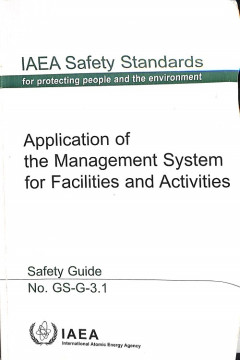
Application of the Management System for Facilities and Activities, Safety Guide
This publication provides guidance for following the requirements for management systems that integrate safety, health, security, quality assurance and environmental objectives. A successful management system ensures that nuclear safety matters are not dealt with in isolation but are considered within the context of all these objectives. The aim of this publication is to assist Member States to…
- Edisi
- -
- ISBN/ISSN
- -
- Deskripsi Fisik
- 105 p. : Illus. ; 24 cm
- Judul Seri
- Safety Standards Series No. GS-G-3.1
- No. Panggil
- 633.10486IAE A
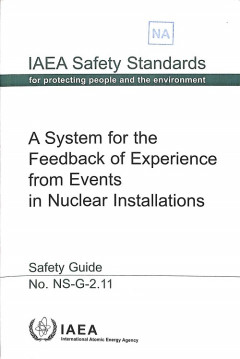
A System for the Feedback of Experience from Events in Nuclear Installations
This Safety Guide provides recommendations on all the main components of operating experience feedback systems, utilizing relevant information on events and abnormal conditions that have occurred at nuclear installations around the world. It focuses on the interaction between the different systems for using operating experience feedback and constitutes an update and an extension of Part I: A Na…
- Edisi
- -
- ISBN/ISSN
- 9201014066 / 1020525X
- Deskripsi Fisik
- 61 p. : Illus. ; 24 cm
- Judul Seri
- Safety Standards Series No. NS-G-2.11
- No. Panggil
- 621.483 IAE A
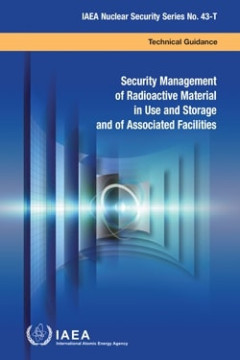
Security Management of Radioactive Material in Use and Storage and of Associa…
The IAEA Nuclear Security Series provides international consensus guidance on all aspects of nuclear security to support States as they work to fulfil their responsibility for nuclear security. The IAEA establishes and maintains this guidance as part of its central role in providing nuclear security related international support and coordination. The IAEA Nuclear Security Series was launched in…
- Edisi
- -
- ISBN/ISSN
- 978–92–0–118321–7
- Deskripsi Fisik
- 68 p
- Judul Seri
- IAEA nuclear security series
- No. Panggil
- 620.267:343.852 IAE s
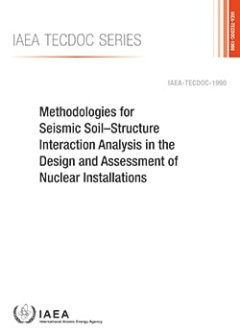
Methodologies for Seismic Soil–Structure Interaction Analysis in the Design…
The response of a nuclear installation’s structure during an earthquake depends on the characteristics of the ground motion, the surrounding soil and the structure itself. Soil– structure interaction (SSI) analysis is used to evaluate the effects of seismic ground motion on an installation’s structure, system and components, to ensure it is designed to withstand the effects of earthquakes…
- Edisi
- -
- ISBN/ISSN
- 978-92-0-143121-9
- Deskripsi Fisik
- 194 p
- Judul Seri
- IAEA TECDOC
- No. Panggil
- 621.039.58 IAE m
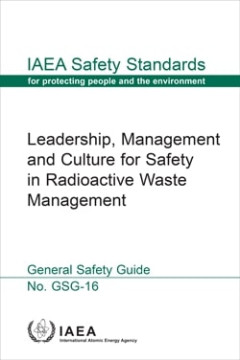
Leadership, Management and Culture for Safety in Radioactive Waste Management…
This Safety Guide provides recommendations on how to comply with IAEA safety requirements on leadership and management for safety in the area of radioactive waste management. It presents updated guidance on developing and implementing management systems for safety during all steps of radioactive waste management. Emphasis is placed upon effective leadership and culture for safety. The publicati…
- Edisi
- -
- ISBN/ISSN
- 978–92–0–137521–6
- Deskripsi Fisik
- 99 p
- Judul Seri
- IAEA safety standards series
- No. Panggil
- 621.039.7 IAE l
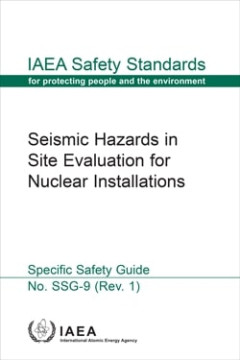
Seismic Hazards in Site Evaluation for Nuclear Installations: IAEA Safety Sta…
The IAEA’s Statute authorizes it to “establish…standards of safety for protection of health and minimization of danger to life and property”. These are standards that the IAEA must apply to its own operations, and that States can apply through their national regulations. Radioactivity is a natural phenomenon and natural sources of radiation are features of the environment. Radiation…
- Edisi
- -
- ISBN/ISSN
- 978-92-0-117921-0
- Deskripsi Fisik
- 77 p
- Judul Seri
- IAEA safety standards series
- No. Panggil
- 621.039.58
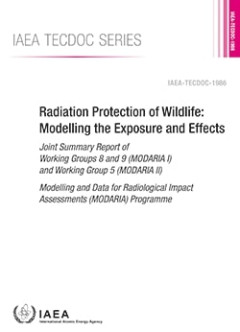
Radiation Protection of Wildlife: Modelling the Exposure and Effects, IAEA TE…
In recent years there has been a rapid development in models and approaches to assess whether the environment (or wildlife) is protected from releases of radioactive material. Through the Environmental Modelling for Radiation Safety (EMRAS and EMRAS II) and Modelling and Data for Radiological Impact Assessments (MODARIA I and MODARIA II) programmes, the IAEA has facilitated knowledge sharing on…
- Edisi
- -
- ISBN/ISSN
- 978-92-0-138021-0
- Deskripsi Fisik
- 89 p
- Judul Seri
- IAEA TECDOC series
- No. Panggil
- 614.715 IAE r
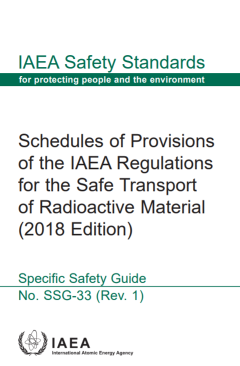
Schedules of provisions of the IAEA regulations for the safe transport of ra…
Radioactivity is a natural phenomenon and natural sources of radiation are features of the environment. Radiation and radioactive substances have many beneficial applications, ranging from power generation to uses in medicine, industry and agriculture. The radiation risks to workers and the public and to the environment that may arise from these applications have to be assessed and, if necessar…
- Edisi
- 2021
- ISBN/ISSN
- 978-92-0-121921-3
- Deskripsi Fisik
- 322 p
- Judul Seri
- IAEA Safety Standards Series No. SSG-33 (Rev. 1)
- No. Panggil
- 656.073 IAE s
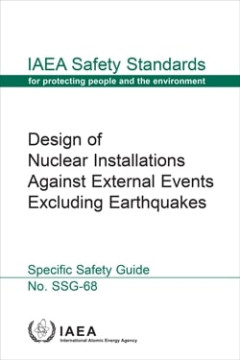
Design of Nuclear Installations Against External Events Excluding Earthquakes…
The status of the IAEA safety standards derives from the IAEA’s Statute, which authorizes the IAEA to establish or adopt, in consultation and, where appropriate, in collaboration with the competent organs of the United Nations and with the specialized agencies concerned, standards of safety for protection of health and minimization of danger to life and property, and to provide for their appl…
- Edisi
- IAEA Safety Standards Series.
- ISBN/ISSN
- 978-92-0-136121-9
- Deskripsi Fisik
- 112 p
- Judul Seri
- IAEA Safety Standards Series.
- No. Panggil
- 621.039.58 IAE d
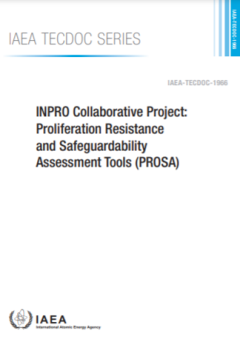
INPRO Collaborative Project: Proliferation Resistance and Safeguardability As…
This publication presents the results of the INPRO collaborative project: Proliferation Resistance and Safeguardability Assessment (PROSA) Tools. The PROSA assessment process has been developed to specifically address the needs of national self-assessors performing an INPRO Nuclear Energy System Assessment of sustainability. The main objective of this project is to explore approaches to make th…
- Edisi
- 2021
- ISBN/ISSN
- 978-92-0-123021-8
- Deskripsi Fisik
- 108 p
- Judul Seri
- -
- No. Panggil
- 621.483 IAE i
 Karya Umum
Karya Umum  Filsafat
Filsafat  Agama
Agama  Ilmu-ilmu Sosial
Ilmu-ilmu Sosial  Bahasa
Bahasa  Ilmu-ilmu Murni
Ilmu-ilmu Murni  Ilmu-ilmu Terapan
Ilmu-ilmu Terapan  Kesenian, Hiburan, dan Olahraga
Kesenian, Hiburan, dan Olahraga  Kesusastraan
Kesusastraan  Geografi dan Sejarah
Geografi dan Sejarah